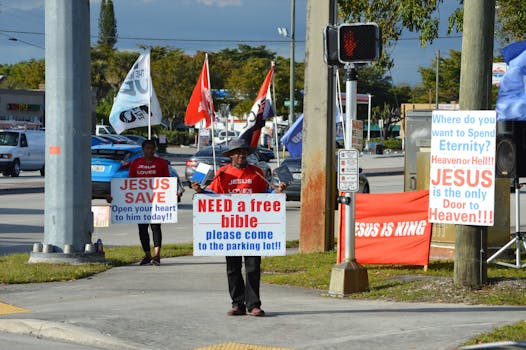
data-usecase-icon="recurring_donations"
Launch a Weekly Tithe Club
Automate weekly or monthly tithes to ensure steady, predictable giving and simplify your bookkeeping—completely fee-free.
data-usecase-cta="recurring_donations"
data-usecase-icon="donation_form"
Kick Off Sanctuary Renovation Drive
Create a dedicated campaign to fund your renovation or expansion project with a customized donation form that tracks gifts and progress in real time.
data-usecase-cta="donation_form"
data-usecase-icon="peer_to_peer"
Power Up Global Mission Relay
Empower congregants to build personal fundraising pages and rally their networks for overseas mission trips, multiplying your reach and impact.
data-usecase-cta="peer_to_peer"
data-usecase-icon="event"
Plan a Harvest Festival Benefit Dinner
Sell tickets online for your fall dinner and fellowship night, streamline RSVPs, and collect attendee info—all without processing fees.
data-usecase-cta="event"
data-usecase-icon="raffle"
Run a Spring Raffle Night
Offer raffle tickets for themed gift baskets or experiences to engage members and raise funds for youth ministry programs effortlessly.
data-usecase-cta="raffle"
data-usecase-icon="store"
Open Your Church Spirit Store
Launch an online store stocked with branded apparel, books, and ministry materials to boost community pride and generate ongoing revenue.
data-usecase-cta="store"
How Zeffy compares to other fundraising platforms for Churches
Fees | You keep | You lose | ||
|---|---|---|---|---|
0% platform & processing fees | $50,000 | $0 | ||
2.9% + $0.30/transaction | $48,400 | -$1,600 | ||
2.2% + $0.30 + ~2.35% platform fees | $47,500 | -$2,500 | ||
2.9% + $0.30/transaction | $48,350 | -$1,650 | ||
3.7% + $1.79/ticket + 2.9% processing | $46,550 | -$3,450 (est.) | ||
1.99% + $0.49 | $48,560 | -$1,440 |
100% free, always.
Top 6 fundraising ideas for Churches
🌭 Summer Grill & Give
Host a church cookout with games and a suggested donation for entry, building fellowship while funding outreach projects.
🍦 Ice Cream Fellowship
Invite neighbors for an ice cream social on the church lawn. Include donation jars and raffle tickets for youth mission trip support.
🎶 Virtual Praise Party
Live-stream a worship concert with local musicians. Viewers give via chat links and share invites to boost donations.
🏖️ Beach Sunset Service
Hold an evening worship on the beach with a free picnic. Guests donate toward community programs under the sunset skies.
🚣♀️ Paddle for Prayer
Organize a paddleboard prayer session on a local lake. Rent boards, invite donors to sponsor each paddler for church missions.
🎒 Backpack Blessings Drive
Gather school supplies and pack backpacks for kids in need. Sponsors cover costs and write notes of encouragement.
Want more inspiration?
Explore 40+ free Churches fundraising ideas
Top grants for Churches in 2025

Kingdom Advancing Grant
Brotherhood Mutual Foundation
$4,000 to $35,000
Supports church programs in the continental U.S. that introduce people to Jesus or strengthen their relationship with Jesus, are innovative, sustainable, and replicable. Decisions by July 31, 2025.

NYS Office of Faith and Nonprofit Development Services Funding
New York State Office of Faith and Nonprofit Development Services
N/A
No specific grant details found for July 2025 or upcoming months. This is a general information portal for funding opportunities.

Mardag Foundation Grants
Mardag Foundation
Varies
The Mardag Foundation is transitioning its grantmaking in 2025 and will not have an open application round. Only invited organizations will be eligible for transitional grants.

Charles & Jack Fund for LGBTQ+ Advancement
Community Foundation of Louisville
Varies
The Charles & Jack Fund for LGBTQ+ Advancement supports organizations serving queer youth in Metro Louisville or Kentucky. Applications are open through July 28, 2025.
Top companies that donate to Churches in 2025

Walmart
Supports nonprofits, including churches, through its Spark Good programs, which offer local grants, customer round-up donations, registries for needed items, and opportunities to request space outside Walmart facilities for fundraising and awareness.

Elevated Faith
Donates a portion of its profits to Christian organizations worldwide, partnering with groups like God Behind Bars, Embrace Grace, and Bridge of Hope.

Target
Provides grants to eligible nonprofit organizations that focus on local communities, which can include churches engaged in community-based programs.

Johnson & Johnson
Supports various community-based programs through its corporate giving, focusing on health and well-being, which may include initiatives run by churches that align with these goals.
Frequently asked questions
Is Zeffy really 100% free for Churches? What’s the catch?
Yes, Zeffy is 100% free for churches! We charge no platform fees, no processing fees, and there are absolutely no hidden costs. This is made possible by optional tips from donors who appreciate the mission of helping churches like yours keep every dollar raised. No catch!
Can Churches use Zeffy to collect tithes?
Absolutely! Churches can use Zeffy to collect tithes, sell event tickets, and set up recurring giving, all without any fees. Every dollar given goes directly to supporting your church's mission and community.
What types of fundraising campaigns can Churches run with Zeffy?
Churches can launch various fundraising campaigns with Zeffy. Run peer-to-peer fundraisers where parishioners inspire each other to give, host ticketed events like concerts or dinners, and set up recurring donation programs for ongoing support. Whatever your fundraising vision, Zeffy provides the tools you need to make it happen without losing a penny to fees.
What’s the best fundraising platform for Churches?
Zeffy is the only truly 100% free fundraising platform for churches. While other platforms might claim to be free but still charge processing fees or add hidden costs, Zeffy ensures that every dollar raised goes directly to your mission. This means more funds go directly to where they're needed most — your congregation and community initiatives.













